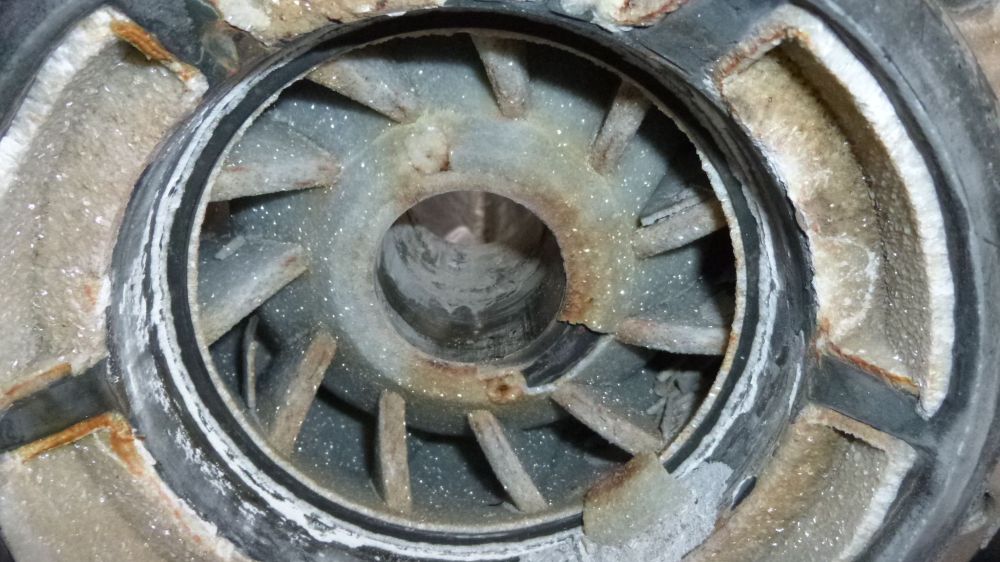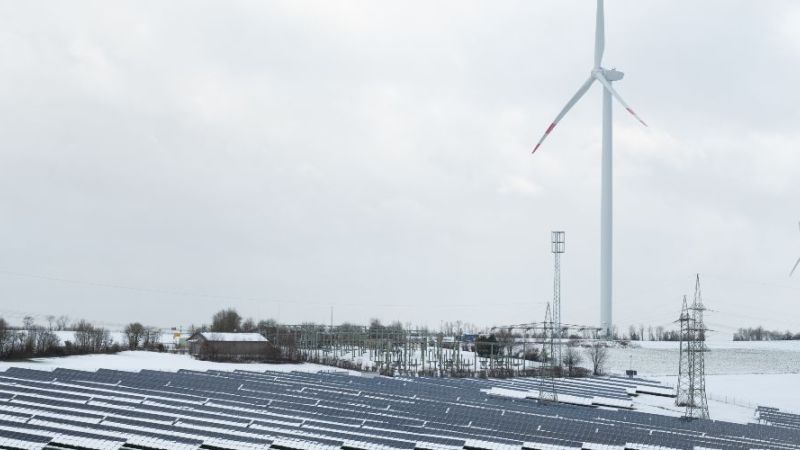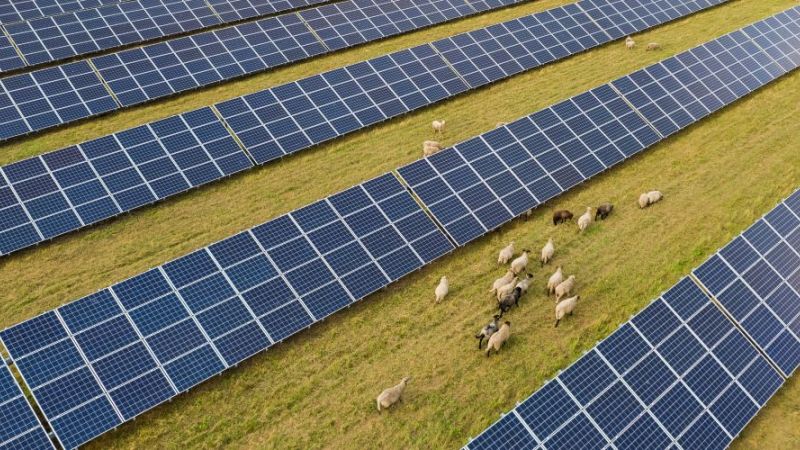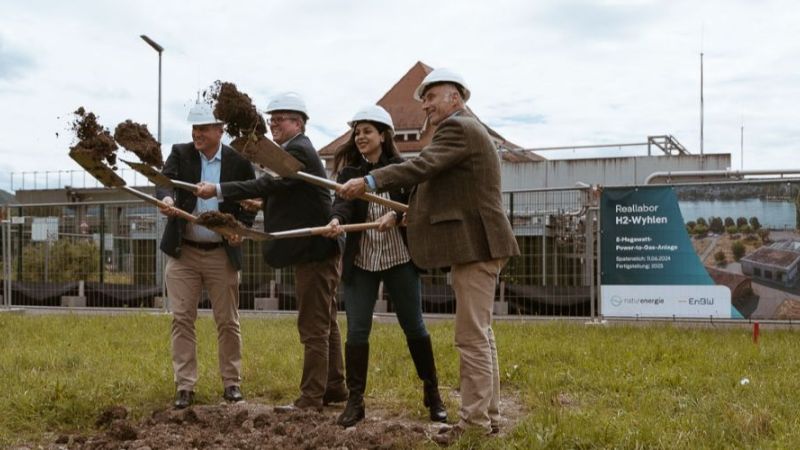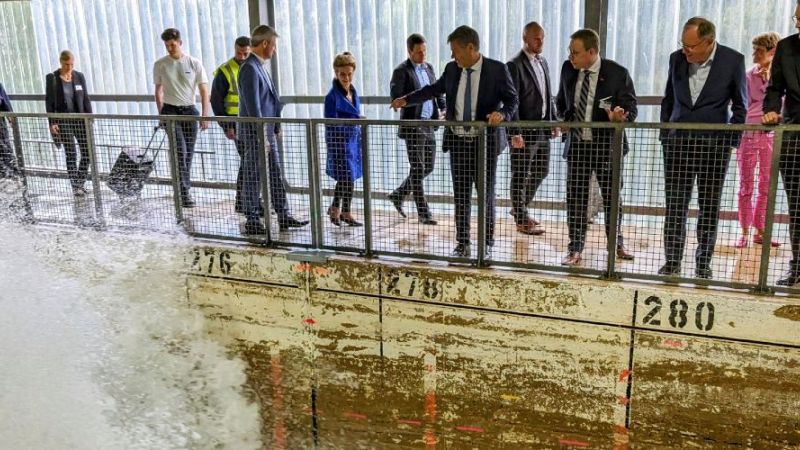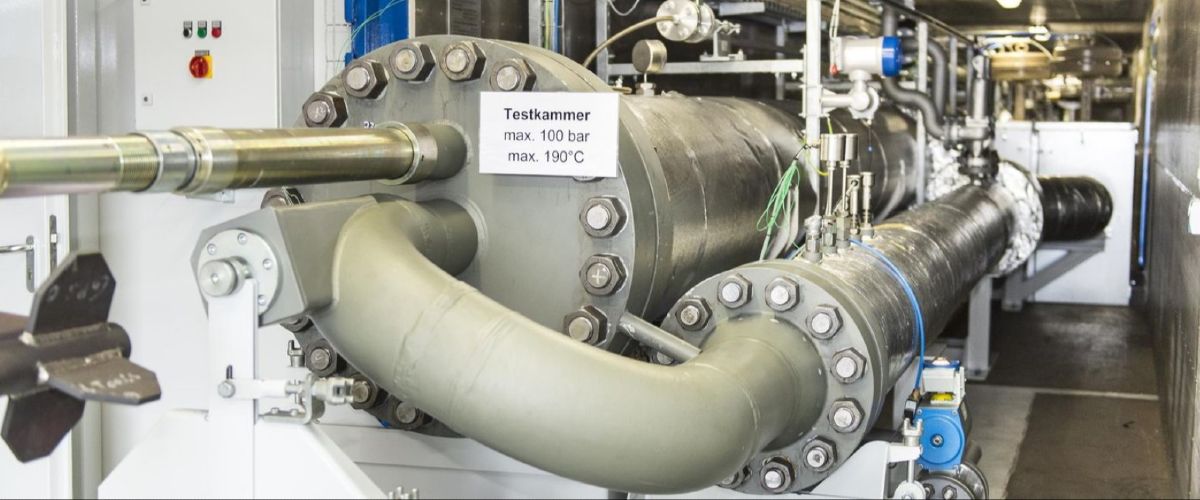 © Baker Hughes
© Baker Hughes
Geothermal Energy
Reliable centrifugal submersible pumps for deep geothermal energy
In geothermal plants, centrifugal submersible pumps transport hot and often calcareous thermal water to the earth's surface. If one component of a submersible pump fails, the entire system including the riser pipe, which can be up to 1000 metres long, must be removed from the borehole and replaced. This involves high costs. Initial problems with the pumps can occur after just a few months. For this reason, scientists within the research project "Centrifugal Submersible Pumps" have tested new materials and developed new pumps that are expected to operate reliably for three years.
Hot thermal water damages centrifugal submersible pumps
Lime not only causes unsightly deposits in pots and pans but also clogs up kettles and washing machines. Operators of geothermal power plants also have to deal with dissolved lime in hot thermal water. The submersible pumps, which work directly in the thermal water at a depth of several hundred metres, calcify after a short time. The lime is deposited on all components of the pump system, especially on the hot bearings. These bearings are subject to high frictional forces. As a result, their temperature rises sharply during operation.
Since the heat volume required in the heating network varies throughout the day, the production rate of the geothermal plant must be adapted to the demand. This makes it necessary to adjust the speed of the pump. In addition, the pump also stops and starts occasionally when maintenance work is required on the power plant. This operating mode affects the pressure and temperature in the pump system. Temperatures for instance fluctuate between 50 and 180 degrees Celsius and put a strain on pump bearings, seals and motor insulation.
Submersible pump systems in deep geothermal energy work in hot and calcareous thermal water with very different delivery rates. This means that they are under greater strain and break down more frequently than oil extraction plants. Within the research project Centrifugal Submersible Pumps, short for "Increasing the Reliability of Electric Centrifugal Submersible Pumps for Deep Geothermal Applications in Germany", scientists are investigating extraction pumps and their components such as pump, seals, bearings, motor, connection cables and sensors. The results from errors and wear analyses are used by them to develop new submersible pump systems. They can test the first prototypes on a high-temperature pump test stand (HotLoop). This was developed by engineers within a previous funding project and set up in the Celle Technology Center. Further tests are carried out in real-world geothermal wells, for example in Unter- and Oberhaching.
HotLoop – tests at high temperatures
Within the project, the scientists have, among other things, developed new materials for submersible pump systems and equipped seals and pump bearings with these. They then successfully tested these new components with the HotLoop test stand. This enables them to investigate the entire pump system under realistic and practical conditions. The method allows them to vary the ambient temperature and the pump output specifically and frequently. The pump ages and wears out much faster. This method is suitable for the early detection and elimination of weaknesses.
The motors of the submersible pumps used so far wear out too quickly in practice. After only two years of operation, they are often so heavily worn that they can no longer be repaired. For this reason, the researchers have redesigned the motor bearings and tested bearing components made of so-called high-performance plastics. They then inspected and improved the bearings using a test stand and constructed the first prototypes. These are currently being investigated in the HotLoop. The aim is to build low-wear motors.
Avoiding calcification – Sauerlach test stand
The HotLoop works with tap water. For this reason, the researchers have additionally investigated the effect of calcareous thermal water on the new bearings and seals on a flow-through test stand at the Sauerlach geothermal well. The results show that both stainless steel components as well as bearings with very smooth and polished surfaces are particularly suitable. Lime adheres much less to the new components of the pump.
New sensor to prevent damage to the pump
The engineers have also developed a high-temperature underground sensor. This is located in the motor of the submersible pump and operates at temperatures of up to 175 degrees Celsius. In addition to the ambient temperature and the current pressure, it also measures vibrations and the temperature of the motor. Critical values, such as an excessive high motor temperature, are sent directly to a control station. The aim is to detect any future damage to the centrifugal submersible pumps at an early stage. The sensor is equipped with a special ASIC, short for "Application Specific Integrated Circuit". This is a chip that is customised for certain functions. It improves the temperature resistance of the sensor. The first prototypes of the high-temperature underground sensor have successfully undergone functional tests.
New centrifugal submersible pumps in field tests
With the new components such as sliding ring seals, pump and motor bearings, the project team has constructed the first prototype pumps. These are already being used successfully in various geothermal wells, for example in Unterhaching. They provide important data on the technical and economic success with very calcareous thermal water in the South German Molasse basin. The running time of the pumps has increased from an average of a few months to over two years. This enables the operator of the geothermal plant to save up to 75 per cent of servicing and repair costs.
Following the project, the new submersible pump components can be prepared for commercial use within a few months.

